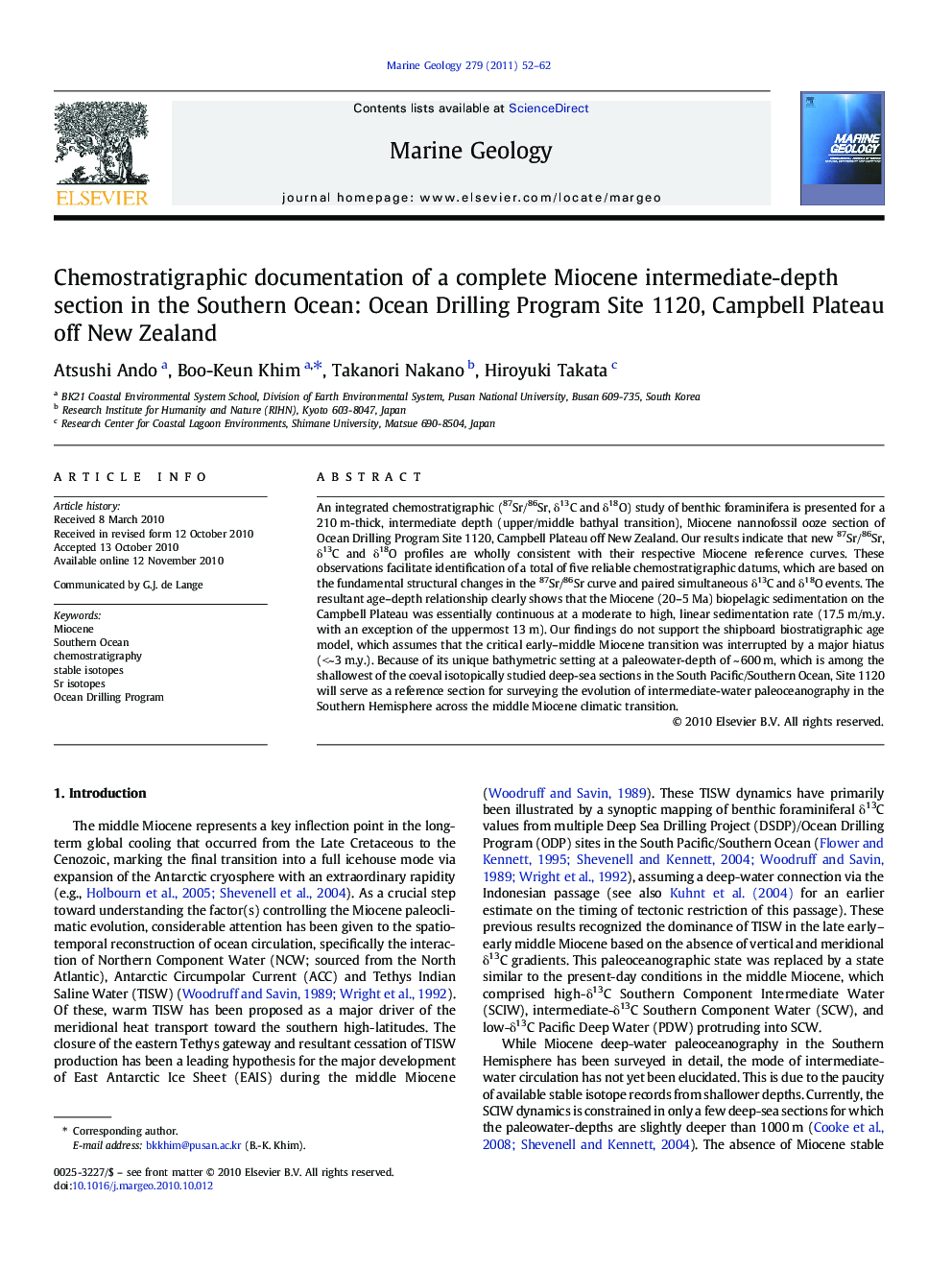| Article ID | Journal | Published Year | Pages | File Type |
|---|---|---|---|---|
| 6441897 | Marine Geology | 2011 | 11 Pages |
Abstract
An integrated chemostratigraphic (87Sr/86Sr, δ13C and δ18O) study of benthic foraminifera is presented for a 210 m-thick, intermediate depth (upper/middle bathyal transition), Miocene nannofossil ooze section of Ocean Drilling Program Site 1120, Campbell Plateau off New Zealand. Our results indicate that new 87Sr/86Sr, δ13C and δ18O profiles are wholly consistent with their respective Miocene reference curves. These observations facilitate identification of a total of five reliable chemostratigraphic datums, which are based on the fundamental structural changes in the 87Sr/86Sr curve and paired simultaneous δ13C and δ18O events. The resultant age-depth relationship clearly shows that the Miocene (20-5 Ma) biopelagic sedimentation on the Campbell Plateau was essentially continuous at a moderate to high, linear sedimentation rate (17.5 m/m.y. with an exception of the uppermost 13 m). Our findings do not support the shipboard biostratigraphic age model, which assumes that the critical early-middle Miocene transition was interrupted by a major hiatus (<~3 m.y.). Because of its unique bathymetric setting at a paleowater-depth of ~ 600 m, which is among the shallowest of the coeval isotopically studied deep-sea sections in the South Pacific/Southern Ocean, Site 1120 will serve as a reference section for surveying the evolution of intermediate-water paleoceanography in the Southern Hemisphere across the middle Miocene climatic transition.
Related Topics
Physical Sciences and Engineering
Earth and Planetary Sciences
Geochemistry and Petrology
Authors
Atsushi Ando, Boo-Keun Khim, Takanori Nakano, Hiroyuki Takata,
